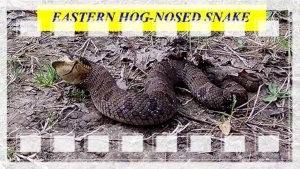Our Observations on Snakes
|
|
Some characteristics of snake behavior are accurate the majority of the time. What throws a curve in this behavior is the fact the creeks in the preserve are mostly spring fed with
cool water. So, things often run on a cycle different than expected. When the air temperature gets above 65 F in the spring, snakes come out in a hurry. Rat snakes and ribbon
snakes come out first. Racers, Coachwhips, and the venomous snakes seem to come out when it gets above 75 F. When it gets above 90 F, most of the snakes go nocturnal.
|
|
Broad Banded Water Snakes: They stay around water. They come out to warm up and rest. They can get to be at least five ft. in length. We have seen them most often in mid-morning,
always near water. The bands can be bold or kind of dull.
|
|
Diamondback Water Snakes: They hunt in the water and prefer the water. They come out to warm themselves and digest meals. You can find them just laying on the bank, or laying
out on logs, always around water. They can be large, at least six ft. in length. There is no Texas snake that is as big around as they can be(circumference). They seem to get active
right at dark.
|
|
Rat Snakes: These guys can climb and move quick. They like brush piles, wood piles, and piles of anything to hide and semi-open country to hunt. They can glide from tree to tree
by using limbs to get to bird nests, with ease. They can get long, over six ft. and have a variety of color forms, but with generally the same shaped top and side blotches. They are
most often seen from dawn up to about noon.
|
|
Racers and Coachwhips: These snakes like more open country. They are not fond of brush piles. Knee high grasses/weeds with shrubs seems to be the favorite hunting territory.
They like it warm and are out in mid-day to mid evening. They are the fastest moving snakes we have seen. They cruise around, head slightly raised, looking for skinks, lizards,
and frogs. One of the racers was at least seven ft. in length. The coachwhips seem to be around five ft. These snakes run away when you get close, at a high speed.
|
|
Ribbon Snakes: There are several sub-species of these. We have seen the base color from a dull grey-green to almost a flourescent green. They are the best frog hunters we have
seen. They can move very fast if needed and have no problem with water. They seem to like to cruise around on banks of creeks, hunting. They are about three ft. maximum in
length, but around two ft. is a lot more common. They can be skinny or a little heavy. We have also seen them a long way from any water. Try to check for the white spot on the
top of the head and a white spot in front of the eye. This seems to be there, regardless of base color. We have found them at all times of the day, until the summer heat moves in.
|
|
Texas Brown Snake: These are usually short, about 18 inches maximum. Some are shorter and fat, others are longer and skinny. They hide under leaf litter and rock piles.
They can get mad if you try to pick them up, and will strike at you. They can be seen anytime.
|
|






















































































































